Install the app
How to install the app on iOS
Follow along with the video below to see how to install our site as a web app on your home screen.
Note: This feature may not be available in some browsers.
You are using an out of date browser. It may not display this or other websites correctly.
You should upgrade or use an alternative browser.
You should upgrade or use an alternative browser.
Energia-aseet: laser ym.
- Viestiketjun aloittaja Umkhonto
- Aloitus PVM
http://www.spacedaily.com/reports/U...unted_laser_for_shooting_down_drones_999.htmlThe U.S. Marines announced Wednesday that they are testing a portable, ground-based laser prototype for shooting down drones.
The Compact Laser Weapons System, or CLaWS, is the first ground-based directed energy weapon approved by the Defense Department. It will be evaluated for several months, with the aim of upgrading it to be included in fixed-site and other mobile situations.
Boeing Co. first announced the weapon in 2015. It is a portable device capable of using an invisible laser to take down targets several hundred meters away. It was designed to focus energy on a small enough spot to heat and destroy targets, including moving ones -- such as drones.
"Think of it like a welding torch being put on target but from many hundreds of meters away," Boeing engineer Isaac Neil said at the time of the introduction.
In 2018, Boeing expressed an interest in mounting the CLaWS on tactical vehicles, including the Joint Light Tactical Vehicle under development to replace the Humvee. The CLaWS comes in 2-, 5- and 10-kW variants and can be carried by two or more Marine personnel.
"One of the related aspects of the CLWS is that it's a counterintelligence, surveillance and reconnaissance tool," said Jim Leary, Boeing director of weapons global sales. "You can shoot down enemy drones that might be observing friendly troops. That's the beauty of this laser."
http://www.spacedaily.com/reports/United_Kingdom_enters_laser_weapons_race_999.htmlThe United Kingdom's Ministry of Defense announced that it seeks developers of laser- and radio frequency-guided weapons to shoot down drones and other enemy threats.
The concept is not new. The United States first employed non-lethal lasers in military service in 2014, largely to disable enemy electrical sensors, and the United Kingdom spent $37 million on a laser prototype in 2017.
The announcement this week by the Ministry of Defense specifically calls for deployment of "high energy light beams to target and destroy enemy drones and missiles. Radio frequency weapons are designed to disrupt and disable enemy computers and electronics."
It asks for development of three new DEW [Directed Energy Weapons] to "explore the potential of the technology and accelerate its introduction onto the battlefield."
The new systems are expected to be tested by 2023, a statement on Tuesday said. The plan calls for lasers to be installed on ships and ground vehicles, with the capability of aiming them at targets to be destroyed. With no ammunition involved, and use of a generator or a vehicle's engine as a power source, operating costs could be low and "unprecedented flexibility on the front line" could be available.
Several countries are actively involved in the development of laser weaponry. In June, the U.S. Marine Corps announced that it is testing a vehicle-mounted, ground-based laser prototype for shooting down drones.
http://www.spacedaily.com/reports/U...ators_for_battles_with_laser_weapons_999.htmlThe US Air Force Research Lab (AFRL) put out a request last week for the development of a wargame simulator to better explore just how well directed-energy weapons like lasers and particle beams will work in battles.
Nextgov reported Monday that the USAF's research organization had issued a request for a vendor to provide the service with wargame modeling for scenarios featuring directed energy weapons "to determine if and how well AFRL/RD and industry technologies can help address warfighter needs and gaps including complementing current fielded technologies and those under development by others," the request states, referring to the lab's Directed Energy Directorate (RD).
"Distributed wargames provide a method of working with warfighters to develop tactics, techniques and procedures - TTPs - and concept of employment - CONEMP - to utilize these AFRL/RD and industry technologies to meet the warfighter needs and gaps," the request continues.
Prospective contractors must submit their capability statements to AFRL by August 19.
Directed energy weapons have become a key battleground in the emerging arms race both on Earth and in space, with the Pentagon testing a variety of both offensive and defensive weapons as other countries such as Germany, the United Kingdom, and China rush to develop their own.
India has also tasked its new Defense Space Agency with carrying out space war games simulations, in part to explore questions similar to Washington's about the how's and what-if's of directed energy weapons in war.
http://www.spacedaily.com/reports/R...killing_lasers_for_Air_Force_testing_999.htmlRaytheon has been contracted by the U.S. Air Force to produce high energy laser weapon systems that will be field tested for about a year.
The $23.8 million contract, announced Friday by the Department of Defense, covers two HELW systems for experimentation and fielding against unmanned aerial system threats for at least 12 months.
Field assessment of the systems will be conducted outside the continental United States, with work under the deal expected to be finished in November 2020.
The systems consist of 10-kilowatt lasers mounted on ground-based vehicles, and the Air Force said they can be useful against the small drones used by the Islamic State, as well as against a variety of other attack drones -- including drone swarm concepts many countries, including the United States, are working on.
"The fact that it's a laser weapon allows you to put energy in target at the speed of light," Michael Jirjis, leader of the Air Force's directed energy experimentation projects, told the Washington Post. "It can be an instantaneous heating event."
The HELW system uses invisible beams of light to track and target hostile drones as part of Raytheon's multi-spectral targeting system, which the company said has logged more than four million operational flight hours. The system is mounted on and operates from a Polaris MRZR all-terrain vehicle.
The Air Force is currently working with Raytheon on two heat-based systems -- a laser and a high-power microwave -- with the two-prototype order as the first operational field assessment of the weapons.
The Air Force announced plans to push forward on developing the weapons after successful testing in 2018 and early 2019.
"Right now, we need to put capability on the field and see what's being offered," Jirjis told Air Force Magazine in April. "Eventually, we'd like to move these systems to a low-rate initial production, but there's a lot of learning that still needs to be done before we get there."
Raytheon also has been working with the Army to develop a laser weapon.
In June, the Marine Corps announced it is testing a Boeing-made ground-based, portable laser prototype -- also meant to shoot down drones -- called the Compact Laser Weapons System, or CLaWS.
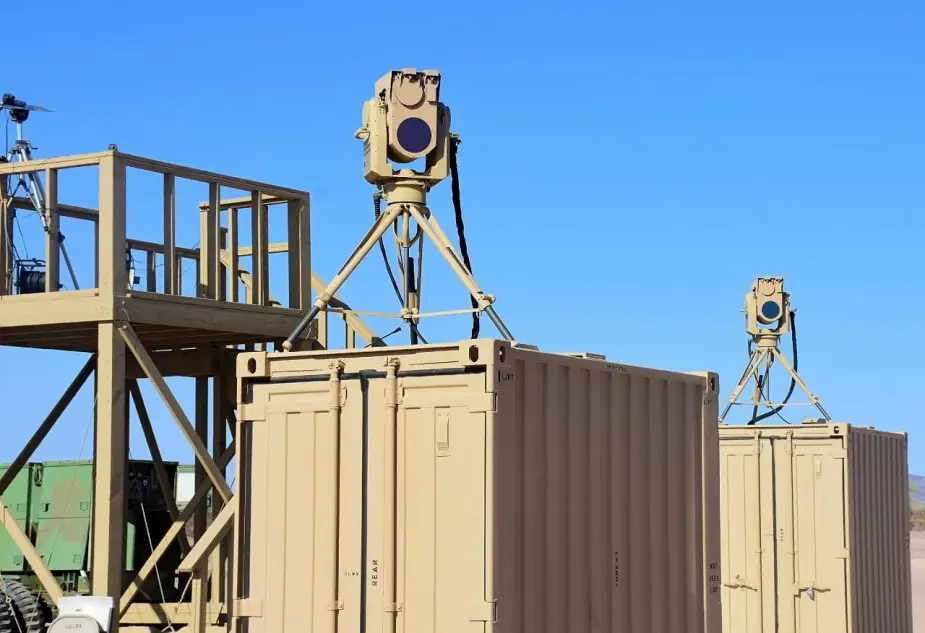
https://www.armyrecognition.com/wea...roves_its_ability_to_counter_uas_threats.htmlThe Boeing Company announced on its Twitter account that in a recent test, Compact Laser Weapon System hit 19 out of 19 moving targets. The Compact Laser Weapon Systems, or CLWS, is a portable laser system and can stand alone or pair with weapon platforms on vehicles or ships. Silent, invisible and precise—CLWS harnesses directed energy on its targets.
According to AFCEA International, for ground-based applications, the weapon can be placed on a tripod and on top of its corresponding military container, which houses the electric power and cooling subsystems.
The Silent Strike uses a 2 kW laser. The full laser weapon system, including the command-and-control and fire control components, are packed into a small shipping container. The total weight of a single CLWS system, including the container, is 2,267.96 kg.
Boeing’s Directed Energy expertise extends from the High Energy Laser Mobile Demonstrator – a laser system that has tracked and destroyed mortar rounds and unmanned aerial vehicles – to Compact Laser Weapon Systems that can stand alone or pair with weapon platforms on vehicles or ships. Directed Energy systems – powered by a vehicle’s or vessel’s diesel fuel supply or on-board power – deny and defeat threats with precision. With a low cost per shot and an infinite magazine, Directed Energy systems are effective over land, air and sea.
https://www.military.com/daily-news...dy-deploy-drone-killing-laser-and-phaser.htmlAs the Army moves forward with plans to mount anti-drone lasers on Stryker vehicles, the Air Force is preparing to send its own vehicle-borne laser drone-killers overseas in just a few months.
Raytheon Space and Airborne Systems received a $23.8 million contract from the Air Force in August for two prototype high-energy laser weapons systems, designed to take out threatening unmanned aerial systems. The plan, according to contracting documents, is to deploy the systems for a year for testing and experimentation, wrapping up the effort by November 2020.
At the same time, the Air Force has contracted with Raytheon for a $16 million prototype Phaser high-powered microwave counter-drone system, to be deployed and tested by service personnel within the same timeframe.
At the Association of the United States Army annual meeting in Washington, D.C., this week, Raytheon executives said one of the high-energy laser systems has already been delivered to the Air Force, and the other will follow shortly.
https://www.military.com/daily-news...l-boats-could-be-mounted-more-navy-ships.htmlA Navy warship is getting a laser five times stronger than the one the service has tested in the past, and officials say it could lead the way for more vessels to head to sea with similar weapons.
The amphibious transport dock ship Portland is being outfitted with a 150-kilowatt laser system. That's a big power leap from the 30-kilowatt Laser Weapon System, or LaWS, that the service field-tested on the amphibious transport dock ship Ponce about five years ago.
"Big things" are expected from the Portland's new laser, Thomas Rivers, program manager for the amphibious warfare program office, said here at the Modern Day Marine 2019 expo.
"They're just putting it on the ship now," he said. "... And this may be the beginning of seeing a lot more lasers coming onto different ships."
The U.S. Navy says the Freedom class Littoral Combat Ship USS Little Rock will get a 150-kilowatt class laser weapon system from Lockheed Martin this year. This would make Little Rock the third of the service's warships to be fitted with a high-power laser of some kind, following the installation of two different designs on the Arleigh Burke class destroyer USS Dewey and the San Antonio class landing platform dock amphibious ship USS Portland last year. The War Zone was first to report that both of these vessels had gotten their respective lasers.
U.S. Navy Vice Admiral Richard Brown, Commander of Naval Surface Forces, told reporters about the impending laser installation on Jan. 13, 2020, as first reported by USNI News. At around this exact time last year, the officer had announced plans to have Little Rock deploy in early Fiscal Year 2020, which officially began on Oct. 1, 2019. If that schedule remains the same – this ship notably suffered damage after smacking into a moored vessel in Canada last year shortly after the Navy took delivery of it – the Littoral Combat Ship (LCS) could be receiving its laser very soon, if it hasn't already, and be preparing to deploy. It is most likely headed for a cruise in Latin American waters, where its primary mission could be chasing drug smugglers, according to USNI News.

Navy Littoral Combat Ship Will Soon Be Armed With A Laser Weapon System
The USS Little Rock is poised to become the third active Navy ship to be equipped with a new laser weapon.
150kW
The U.S. Navy announced Thursday that it has installed a laser weapon system that allows ships to counter aerial drones.
According to the Navy, the first Optical Dazzling Interdictor, Navy (ODIN) was installed on the Arleigh Burke-class guided missile destroyer USS Dewey during the vessel's recently completed dry-docking restricted availbility.
The system's development, testing and production was carried out by Navy experts at Naval Surface Warfare Center Dahlgren Division.
"This is a great example of our organic talent at the warfare centers all working together with ship's company to deliver a system which will provide game-changing capability. Bravo Zulu to the entire ODIN team on being mission-focused and delivering lethal capability to the warfighter," said assistant secretary for the Navy for research development and acquisition after a recent visit on the Dewey.
According to the Navy, the install marks the first operational deployment of the system, which functions as a dazzler -- a non-lethal weapon that uses intense directed radiation to temporarily disable its target -- and allows the Navy to rapidly combat unmanned aerial threats.
"The Pacific Fleet Commander identified this urgent Counter-Intelligence, Surveillance, and Reconnaissance need and the Chief of Naval Operations directed us to fill it as quickly as possible," said Cmdr. David Wolfe, Program Executive Office Integrated Warfare Systems Directed Energy office. "The NSWC Dahlgren Division team did an amazing job addressing challenges and keeping our accelerated schedule on track and moving forward to deliver this capability."
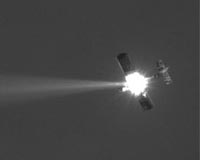
Navy installs ODIN laser weapon system to counter aerial drones
Washington DC (UPI) Feb 20, 2020 - The U.S. Navy announced Thursday that it has installed a laser weapon system that allows ships to counter aerial drones.
www.spacewar.com
The Air Force Research Laboratory has set up the Air Force's first high-energy laser weapon system overseas for a 12-month field assessment. The Air Force Strategic Development Planning and Experimentation (SDPE) Office located here is leading the project.
"The receiving combatant command will utilize this system as an operational asset against small unmanned aircraft systems for the duration of the field assessment," said Dr. Michael Jirjis, the SDPE Base Defense Experimentation director.
During the 12-month field assessment, the Air Force will be evaluating five systems. Field assessments began in January 2018 when the Vice Chief of Staff of the Air Force, Gen. Stephen Wilson, asked the Air Force to experiment with directed energy systems as an effort to transition game changing capability to the warfighter.
The Air Force will be evaluating the Raytheon High Energy Laser (HELWS), Raytheon High Power Microwave (PHASER), and the AFRL Tactical High Power Operational Responder (THOR) drone killer.
AFRL is especially excited about the THOR field assessment, since it was developed in house.
"THOR is a directed energy game-changer," said Dr. Kelly Hammett, AFRL's Directed Energy director. "Drones are becoming more and more pervasive and can be used as weapons intended to cause harm to our military bases at long standoff ranges. We built the THOR weapon system as a deterrent against these type threats. THOR with its counter electronic technology can take down swarms of drones in rapid fire. This capability will be an amazing asset to our warfighters and the nation's defense."
Leading up to the current field assessment, the Air Force SDPE Office successfully led operational experimentation events of laser and high power microwave testing events in the fall of 2018 at White Sands Missile Range in New Mexico and in the fall of 2019 at the Maneuver Fires Integrated Experiment (MFIX) event held at Ft. Sill, Oklahoma.
"The overseas field assessments are allowing us to understand directed energy as a capability against drones. This gives us a better picture of the military utility, reliability and sustainability, training requirements and implementation with existing base defense," Jirjis said.
According to Jirjis, the next 12 months will allow the Air Force Research Laboratory to shape how the Air Force wants to move forward with both high energy lasers and high power microwaves against small drones.
"The intent of these systems are to be operationally used by the combatant commanders for the duration of the 12 months," he said.
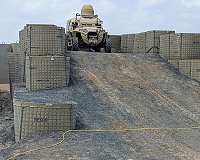
AFRL gives warfighters new weapons system
Wright-Patterson AFB OH (SPX) Apr 08, 2020 - The Air Force Research Laboratory has set up the Air Force's first high-energy laser weapon system overseas for a 12-month field assessment. The Air Force Strategic Development Planning and Experime
www.spacewar.com
One of the most fearsome planes in the U.S. Air Force arsenal is about to get a high tech upgrade. The service plans to test a laser weapon system aboard the AC-130J Ghostrider gunship in 2022, making it the first offensive laser weapon tested aboard an Air Force aircraft. The laser will give the gunship the ability to damage equipment and injure but not kill enemy combatants, a “less than lethal” capability the heavily armed airplane has lacked until now.
The service announced the plans at the Virtual Special Operations Forces Industry Conference, a conference typically held in Tampa, Florida every year but held online during the COVID-19 pandemic.
Laser weapons produce unique effects not possible with kinetic energy and chemical energy weapons. Laser weapons use concentrated pulses of light to transfer energy to the target, quickly heating it. A laser could theoretically kill someone, burning smoking holes in people and severing limbs like lasers do in movies, but it needs enough power (rated in kilowatts) to do so.
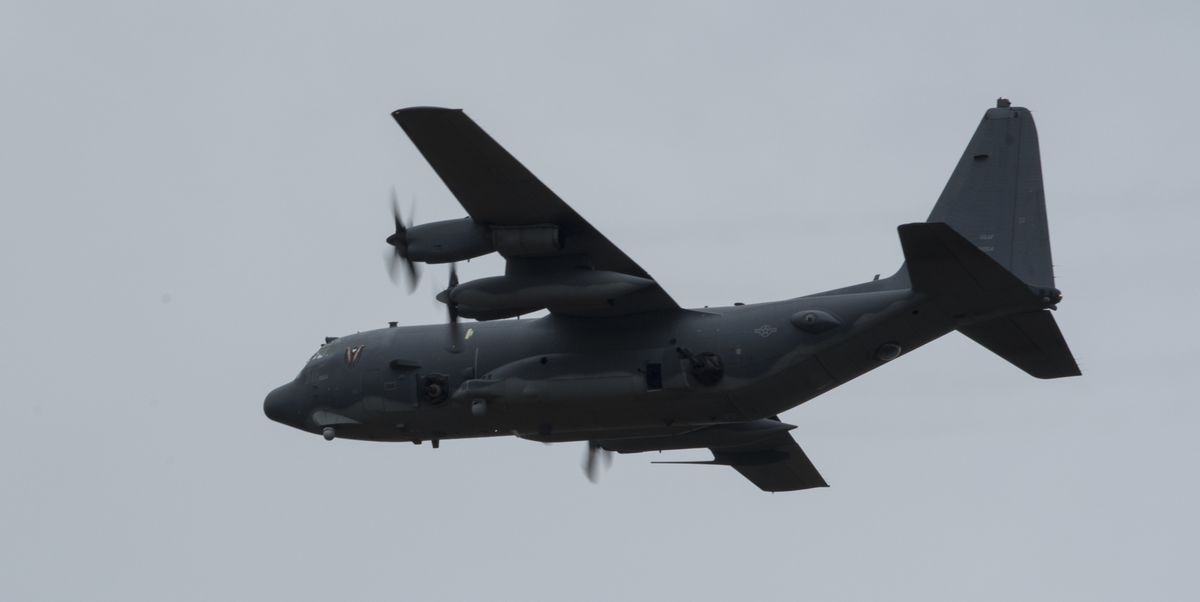
How Could the AC-130 Gunship Get Even Better? Lasers.
While a bit behind schedule, the Air Force's gunship is finally getting outfitted with lasers.

Audio Engineers Built a Shield to Deflect Police Sound Cannons
Amidst nationwide protests, two audiophiles have designed a defense against LRADs, the militaristic sonic weapons used by police to disperse crowds.


Check Out This Sailor Holding A Laser Rifle Aboard The Nuclear Submarine USS Minnesota
The dazzler helps defend submarines when they are at their most vulnerable when traversing tight waterways while surfaced.


Check Out This Sailor Holding A Laser Rifle Aboard The Nuclear Submarine USS Minnesota
The dazzler helps defend submarines when they are at their most vulnerable when traversing tight waterways while surfaced.www.thedrive.com
En tiedä lasereista, mutta muistaakseni olen nähnyt tuollaisen tukin jossakin Ruger 10/22:n alla.
300 kW testeissä
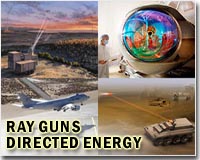
The Army is evaluating new air and missile defense systems -- and testing laser weapons -- after postponing some tests due to COVID-19.
Soldiers from the 3rd Battalion, 43rd Air Defense Artillery Regiment and 3rd Bn., 6th Air Defense Artillery Air Missile Defense Test Detachment are involved in a limited user test of the Integrated Battle Command System that began in early July, according to a Monday press release from the branch.
The test had been scheduled for May but was pushed back due to COVID-19 safety concerns, according to Maj. Gen. Robert Rasch Jr., head of the Program Executive Office of Missiles and Space.
Now the Army plans to complete the test by September.
The 3-43 ADA, a Patriot missile unit will also be the first unit equipped with the IBCS capability once the limited user test is complete, after which the equipment and software will be refreshed to support an operational test and evaluation before 2022, when the unit is expected to achieve operational capability.
"The Army committed one of its coveted Patriot battalions, which are in high demand across the world given the current [operational] tempo requirements," Rasch said.
ICBS is the cornerstone of the Army's Integrated Air and Missile Defense strategy, according to Northrop Grumman, which partnered with the Army to develop the system.
It's intended to replaced legacy stove-piped systems with a network-centric approach, integrating disparate radars and weapons for a more complete weapons enterprise.
Bill Lamb, director, multi-domain mission command operating unit for Northrop Grumman, told the Redstone Rocket that the Army aims to have ICBS in use by 2023.
"Once the commander decides they are sufficiently trained and could go and use it," is when full production begins, he said. "The Army has indicated the timing of it being in use as early 2023."
The Army is also pursuing directed energy weapons, to include high-energy lasers and high-power microwave systems, including a a 50-kilowatt laser aboard a Stryker combat vehicle in support of air defense artillery operations, as well aa 300-kilowatt Indirect Fire Protection Capability-High Energy Laser, at the platoon level in support of brigade air defense artillery operations.
Earlier this year the Navy broke ground on a Navy weapons research center in California, with experts saying directed-energy weapons are more cost-effective than ever before, and are a particular asset in combating low-cost weapons on the battlefield.
"The world has changed over the last 18 or 19 years as we have been fighting the Global War on Terror," Lt. Gen. Neil Thurgood, director of hypersonics, directed energy, space and rapid acquisition at the Army Rapid Capabilities and Critical Technologies Office. According to Thurgood, with the signing of the National Defense Strategy, the Army is now in an era of power competition against China and Russia.

Army testing new air defense system, laser weapons
Washington DC (UPI) Aug 11, 2020 - The Army is evaluating new air and missile defense systems - and testing laser weapons - after postponing some tests due to COVID-19.
www.spacewar.com
The Army just awarded a $1.2 billion contract to General Dynamics Land Systems for Stryker combat vehicles equipped with new short-range air defense weapons.
Under the contract, the company will produce, test and deliver Interim Maneuver Short-Range Air Defense (IM-SHORAD) Strykers to the Army, a key modernization effort for the service, according to an Oct. 2 company news release.
The IM-SHORAD is designed to counter threats from unmanned aerial systems, as well as enemy helicopter and fixed-wing aircraft, according to the release, which adds that the Army's initial, $230 million order calls for 28 Stryker IM-SHORAD vehicles.
"This dedicated SHORAD capability adds a new operational dimension to the Stryker fleet in all of the Army's maneuver formations," Don Kotchman, vice president and general manager of GD Land Systems -- the company that also manufactures Stryker vehicles for the service -- said in the release.
General Dynamics has partnered with Leonardo DRS and Raytheon on the deal, which has an estimated completion date of Sept. 30, 2025, according to the release.
Air and missile defense is a major modernization priority for the Army as it prepares for future, large-scale conflicts with adversaries such as Russia and China.
The IM-SHORAD vehicles will be equipped with Raytheon's Stinger Missiles.
The Army is also working to equip Strykers with 50-kilowatt lasers under the Directed-Energy Maneuver-Short Range Air Defense (M-SHORAD) effort.
In July 2019, the service selected Northrop and Raytheon to develop competing prototypes of 50-kilowatt laser-equipped Strykers as part of a $203 million deal that includes Kord Technologies as the prime contractor.
Northrop and Raytheon will each bring their laser-equipped Stryker to a competitive shoot-off scheduled for the third quarter of fiscal 2021. Army officials plan to select one of the prototypes, which will ultimately be among four vehicles fielded to the first platoon equipped with the 50-kilowatt version of M-SHORAD.

Army Inks $1.2 Billion Deal to Equip Strykers with Short-Range Air Defense Weapons
Under the contract, the company will produce, test and deliver IM-SHORAD Strykers to the Army.
Since the mid-1960s few weapons have held as much potential and have constantly failed to live up to that potential as Directed Energy Weapons (DEW). However, since the turn of this century even as most countries have curtailed both their hopes and funding from the highs of decades past, DEWs have gradually and quietly matured.
DEWs use the electromagnetic spectrum (light and radio energy) to attack pin-point targets at the speed of light. They are suitable for defending against threats such as rockets, missiles and artillery shells, which can be shot down in mid-flight by DEW.
Additionally, operators can adjust the power of the energy put on a target, unlike a bullet or exploding bomb, allowing for nonlethal uses. A slow decline in military strength encourages politicians, the military and defense contractors to push for greater military spending to acquire increasingly state of the art equipment superior to weapons shipped overseas.
Forthcoming research will seek to augment the power and reduce the size of DEW systems. As DEW weapons become smaller, they will first be vehicle-mounted and then possibly man-portable. The introduction of the Space Force in the United States is expected to be replicated in several countries across Asia and Europe.
DEW will be an integral weapon in the arsenal of the Space Force. The DEW sector is also key to the successful transformation and development of a number of other industries because DEW markets cover a wide-ranging spectrum of products and services.
Amsterdam based Market Forecast's latest report "Global Directed Energy Weapons - Market and Technology Forecast to 2028" examines, analyzes, and predicts the evolution of Directed Energy Weapon (DEW) technologies, markets, and outlays (expenditures) over the next 8 years - 2020 -2028 in the aerospace industry. It also examines DEW markets geographically, focusing on the top 95% of global markets, in the United States, Europe, and Asia.
The DEW industry is one of the few industries that has not been very adversely affected by the ongoing coronavirus pandemic. Throughout the report we show how DEW are used today by the armed forces to act as force multipliers. To provide the most thorough and realistic forecast, this report provides a twin-scenario analysis, including "steady state", increase in budgetary allocation for DEW procurement.
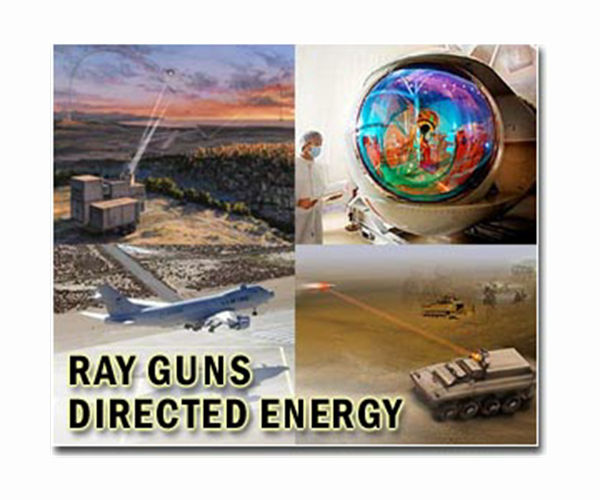
Do Directed Energy Weapons finally live up to their expectations?
Amsterdam, Netherlands (SPX) Sep 23, 2020 - Since the mid-1960s few weapons have held as much potential and have constantly failed to live up to that potential as Directed Energy Weapons (DEW). However, since the turn of this century even as
www.spacewar.com

Global Directed Energy Weapons (DEW) - Market and Technology Forecast to 2028
Global Directed Energy Weapons (DEW) - Market and Technology Forecast to 2028
